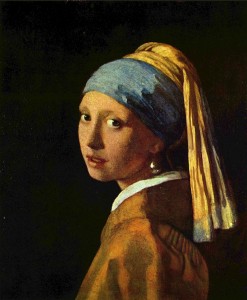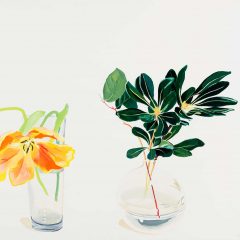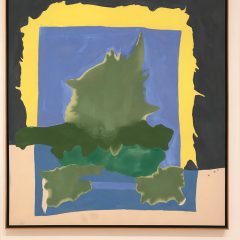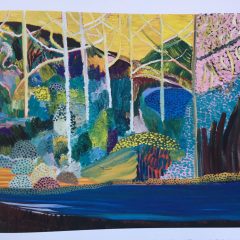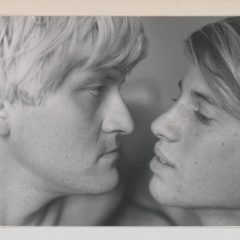It’s not often that I find myself heading for lectures sponsored by applied mathematicians, but last Spring I went to the Math department at the University of Pennsylvania to hear David Stork talk about the usefulness of computer modeling for art historians.

And I wasn’t the lone art historian. I found myself sitting beside David Stone of the University of Delaware and behind us was Chris Poggi, University of Pennsylvania, with a student of hers. Stork, the chief scientist at Ricoh Innovations and Consulting Professor of Statistics at Stanford University was always interested in art and has studied art history. He’s also pioneered the field of computer imaging of art, the talk’s subject. What’s interesting about Stork’s work is that it doesn’t begin with a thesis. Rather he’s developed a range of tools which he can bring to pre-existing art historical questions: exactly what is happening in Las Meninas? How accurately did Vermeer reproduce the scenes and/or figures that he represented? And most sensationally, is David Hockney correct in his theory that Renaissance painters used optical devices to create such highly realistic looking paintings?
Stork is as comfortable talking to art and even general audiences as he is talking to scientists; he’s given literally hundreds of talks worldwide on computer imaging of art, including presentations at the Louvre, the Metropolitan Museum of Art and MoMA. Stork is able to recreate a scene in computer graphics from a painting then manipulate the recreation in three dimensions (so it can be seen from behind); he can rigorously analyze the perspective of a painting using methods far beyond the simple perspective lines we all know from elementary school. Perhaps most novel are his methods for determining the location of light sources in a tableau, and consistency and accuracy of a realist artist’s rendering of lighting. The later means he can distinguish works that were assembled from multiple drawings made at different times from those where the artist worked from life. He was able to remove the uppermost color that Van Gogh applied to a painting, revealing what it had looked like in progress. And he has used computer imaging to study the authenticity of putative Jackson Pollock paintings.
So those questions above? Stork’s analysis of the perspective, the figures’ locations and the mirror’s reflection shows that the image of Velazquez’s king and queen is not a reflection of them standing in the position of the viewer but can only be the reflection of their images in the large painting which we see from the back; this confirms the interpretation of various art historians, including Janson and Snyder. A painting reflecting the image of another painting; that’s the sort of circularity we associate with post-Modernism.
As to Vermeer, Stork analyzed Girl with a Pearl Earring using six different computer methods (all the details of this and other studies can be found at Stork’s website); he showed that the illumination on the girl’s face corresponds so closely to that on her earring that they could only have been painted in the same light, meaning at the same sitting and with her wearing the earring.
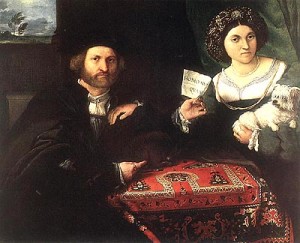
And Hockney’s ideas? Stork analyzed numerous Renaissance paintings, including Van Eyck’s Arnolfini portrait, Campin’s Merode Altarpiece and a portrait of a couple by Lotto (above). He demonstrated that it is extremely unlikely the images derived from the sort of optical device that Hockney proposed. Moreover, he was able to show a lack of symmetry in places where Hockney claimed such symmetry that it could only have been done with aided vision (such as the chandelier in the Arnolfini portrait and the geometric pattern in Lotto’s carpet). These masters were so proficient at illusion that Hockney gave them credit for a perfection they did not achieve.
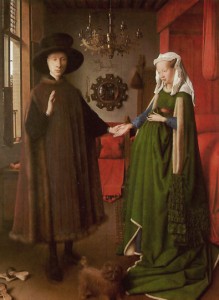
Stork’s work has been well-accepted by scientists and museum personnel. He and Jim Coddington, the head of MoMA’s conservation department, and Anna Benkowska-Kafel of the Courtauld Institute are organizing the second conference in this nascent field next January. The academic art historians have held back. Perhaps they think they will always be the junior partners in collaborations with scientists or that they won’t entirely understand their methods. I may be comfortable because of my background in technical art history, which depends on chemical analyses as well as various radiographic and infrared studies. Stork is actually looking for more questions to answer and more paintings to study; these need to be supplied by art historians for them to have any meaning.
If art historians are concerned that scientists are out to debunk or otherwise simplify the art of painting they can be reassured that Stork’s work only provides more reasons to respect the artists and to admire and wonder at their results.


